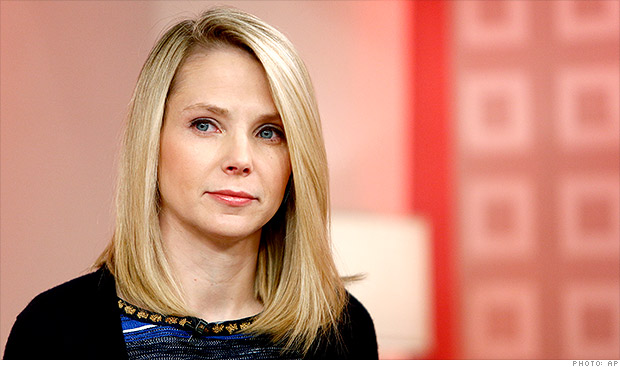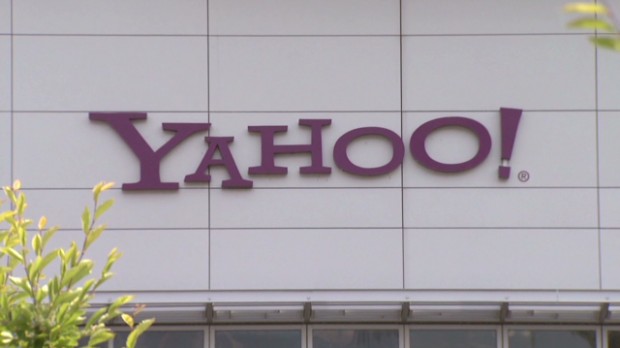The stocks bought by NWQ Investment Management Company over the past 12 months averaged a return of 22.69%. As of the third quarter, the portfolio lists 160 stocks, 17 of them new, a total value at $10.52 billion, with a quarter-over-quarter turnover of 5%. The portfolio is weighted with top three sectors: financial services at 30.1%, technology at 14.9% and energy at 14.2%.
Here are the top four reductions made by NWQ Managers in the third quarter of 2013. NWQ Managers significantly reduced CA Technologies, an Internet technology software company that services a product's total lifecycle. The company reported its second quarter fiscal year 2014 with revenue at $1.14 billion, down 1% from the same fiscal quarter one year ago. Net income was up by 8% (GAAP) at $240 million for the reporting quarter, compared to $222 million in the prior-year quarter. Earnings of $0.53 per diluted share (GAAP) are up by 10%. In the same quarter a year ago, earnings were $0.48 per diluted share, on a GAAP basis.
CA Technologies Inc. (CA): Reduced
Impacts Portfolio: -1.29%
Current Shares: 11,161,263
Up 50% over 12 months, CA Inc. has a market cap of $14.95 billion; its shares were traded at around $33.13 with a P/E ratio of 14.10. The dividend yield is 3.02%.
Guru Action: As of Sept. 30, 2013, NWQ Managers reduced its position by 31.36%, selling 5,100,276 shares at an average price of $29.96, for a gain of 10.6%.
Overall, NWQ Managers has averaged a 49% gain on 8,253,240 shares bought at an average price of $22.20 per share. The firm gained 44% on 51,993,612 shares sold at an average price of $23.08 per share.
Check out more gurus trading and insiders selling.
Track historical share pricing, revenue and net income:
 [ Enlarge Image ]
[ Enlarge Image ]
Viacom Inc. (VIAB): Reduced
Impacts Portfolio: -0.9%
Current Shares: 3,372,883
Up 59% over 12 months, Viacom Inc. has a! market cap of $35.51 billion; its shares were traded at around $79.63 with a P/E ratio of 16.40. The dividend yield is 1.44%.
Guru Action: As of Sept. 30, 2013, NWQ Managers reduced its position by 31.15%, selling 1,525,945 shares at an average price of $77.39, for a gain of 2.9%.
Over five years of selling for major gains, NWQ Managers has averaged an 86% gain on 27,187,216 shares sold at an average price of $42.81 per share.
Check out this remarkable trading history:
 [ Enlarge Image ]
[ Enlarge Image ]
Check out more gurus trading VIAB in the third quarter. No insider activity was found.
Track historical share pricing, revenue and net income:
 [ Enlarge Image ]
[ Enlarge Image ]
Halliburton Company (HAL): Reduced
Impacts Portfolio: -0.87%
Current Shares: 5,984
Up 70% over 12 months, Halliburton Company has a market cap of $46.23 billion; its shares were traded at around $54.50 with a P/E ratio of 25.00. The dividend yield is 0.85%.
Guru Action: As of Sept. 30, 2013, NWQ Managers reduced its position by 99.75%, selling 2,394,262 shares at an average price of $46.84, for a gain of 16.4%.
NWQ Managers has averaged a gain of 129% on 12,070,445 shares bought at an average price of $23.81 per share. The firm gained 43% on 12,064,461 shares sold at an average price of $38.20 per share.
Eight gurus made new buys of HAL in the third quarter. Check out more gurus trading and insiders selling.
Track historical share pricing, revenue and net income:
 [ Enlarge Image ]
[ Enlarge Image ]
Cisco Systems Inc. (CSCO): Reduced
Impacts Portfolio: -0.8%
Current Shares: 11,878,965
Up 13% over 12 months, Cisco Systems Inc. has a market cap of $115.55 billion; its shares were traded at around $21.46 with a P/E ratio of 11.70. The dividend ! yield is ! 3.03%.
Guru Action: As of Sept. 30, 2013, NWQ Managers reduced its position by 24.23%, selling 3,798,630 shares at an average price of $24.82, for a loss of 13.5%.
Overall, NWQ Managers has averaged a 32% gain on 24,438,916 shares bought at an average price of $16.21 per share. The firm gained 2% on 12,559,951 shares sold at an average price of $21.13 per share.
Check out more gurus trading and insiders selling.
Track historical share pricing, revenue and net income:
 [ Enlarge Image ]
[ Enlarge Image ]
NWQ Managers is an affiliate of Nuveen Investments. As of June 30, 2013, Nuveen Investments managed approximately $216 billion.
Professionals with NWQ Managers have an average of 19 years of analytical experience.
Here is the complete portfolio of NWQ Managers.
Use the GuruFocus Value Screen to find 52-Week Lows and discover potentially deep value stocks held by billionaire Guru investors.
GuruFocus Real Time Picks reports the stock purchases and sales that Gurus have made within the prior 2 weeks. The report time lag can be as short as 2 days after the date of the transaction. This feature is for Premium Members only.
If you are not a Premium Member, we invite you for a 7-day Free Trial.
Also check out: NWQ Managers Undervalued Stocks NWQ Managers Top Growth Companies NWQ Managers High Yield stocks, and Stocks that NWQ Managers keeps buying
About the author:Sally Jones writes about Real Time Picks. She says, "I truly enjoy watching the Gurus in realtime and telling their story."
| Currently 3.50/512345 Rating: 3.5/5 (2 votes) |

More GuruFocus Links
| Latest Guru Picks | Value Strategies |
| Warren Buffett Portfolio | Ben Graham Net-Net |
| Real Time Picks | Buffett-Munger Screener |
| Aggregated Portfolio | Undervalued Predictable |
| ETFs, Options | Low P/S Companies |
| Insider Trends | 10-Year Financials |
| 52-Week Lows | Interactive Charts |
| Model Portfolios | DCF Calculator |
RSS Feed  | Monthly Newsletters |
| The All-In-One Screener | Portfolio Tracking Tool |
Have Received Their FREE 12-Page Warren Buffett Portfolio Report Get Yours FREE Here MORE GURUFOCUS LINKS
| Latest Guru Picks | Value Strategies |
| Warren Buffett Portfolio | Ben Graham Net-Net |
| Real Time Picks | Buffett-Munger Screener |
| Aggregated Portfolio | Undervalued Predictable |
| ETFs, Options | Low P/S Companies |
| Insider Trends | 10-Year Financials |
| 52-Week Lows | Interactive Charts |
| Model Portfolios | DCF Calculator |
RSS Feed  | Monthly Newsletters |
| The All-In-One Screener | Portfolio Tracking Tool |
 Michael Sohn/APSprint CEO Dan Hesse Sprint has been ranked last among U.S. cellphone service operators in a customer satisfaction survey by the influential Consumer Reports organization, scoring dismal marks for measures ranging from voice to 4G reliability. No-frills carrier Consumer Cellular received the highest overall score of 88 out of 100, followed by U.S. Cellular (USM) with 75. Sprint received the lowest score of 59, faring the worst in terms of value, voice, text and 4G services. The annual ratings were based on a September survey of 58,399 cellphone service subscribers by the Consumer Reports National Research Center, which publishes widely followed surveys and reviews of everything from cars to refrigerators. In last year's survey, Sprint (S) trailed only Verizon Wireless among the four major carriers. Verizon Wireless (VZ) (VOD) ranked highest again this year with a score of 71. T-Mobile US (TMUS) rated 65 and AT&T (T) 64, according to survey results released Thursday. The rankings are based on ratings for voice, text and 4G, taking into account the occurrence of problems and adjusted for frequency of use. Sprint has been revamping its network after years of customer losses. The company, which is 80 percent owned by SoftBank, warned in October that customer defections would remain high in coming quarters. The company reported a decline in third-quarter revenue as it lost more subscribers than expected following the shutdown of its older network. "Our latest cell service satisfaction survey revealed a somewhat precipitous decline by Sprint that shuffled the rankings of the major standard service providers," Glenn Derene, Electronics Content Development Team Leader for Consumer Reports, said in a statement.
Michael Sohn/APSprint CEO Dan Hesse Sprint has been ranked last among U.S. cellphone service operators in a customer satisfaction survey by the influential Consumer Reports organization, scoring dismal marks for measures ranging from voice to 4G reliability. No-frills carrier Consumer Cellular received the highest overall score of 88 out of 100, followed by U.S. Cellular (USM) with 75. Sprint received the lowest score of 59, faring the worst in terms of value, voice, text and 4G services. The annual ratings were based on a September survey of 58,399 cellphone service subscribers by the Consumer Reports National Research Center, which publishes widely followed surveys and reviews of everything from cars to refrigerators. In last year's survey, Sprint (S) trailed only Verizon Wireless among the four major carriers. Verizon Wireless (VZ) (VOD) ranked highest again this year with a score of 71. T-Mobile US (TMUS) rated 65 and AT&T (T) 64, according to survey results released Thursday. The rankings are based on ratings for voice, text and 4G, taking into account the occurrence of problems and adjusted for frequency of use. Sprint has been revamping its network after years of customer losses. The company, which is 80 percent owned by SoftBank, warned in October that customer defections would remain high in coming quarters. The company reported a decline in third-quarter revenue as it lost more subscribers than expected following the shutdown of its older network. "Our latest cell service satisfaction survey revealed a somewhat precipitous decline by Sprint that shuffled the rankings of the major standard service providers," Glenn Derene, Electronics Content Development Team Leader for Consumer Reports, said in a statement. 
 Forget Marissa. Alibaba fuels Yahoo surge
Forget Marissa. Alibaba fuels Yahoo surge  As the head of an independent agency subject to little Congressional or executive intervention, the chairperson of the US Federal Reserve wields an enormous amount of power over America’s economy.
As the head of an independent agency subject to little Congressional or executive intervention, the chairperson of the US Federal Reserve wields an enormous amount of power over America’s economy.
 Agence France-Presse/Getty Images
Agence France-Presse/Getty Images 

